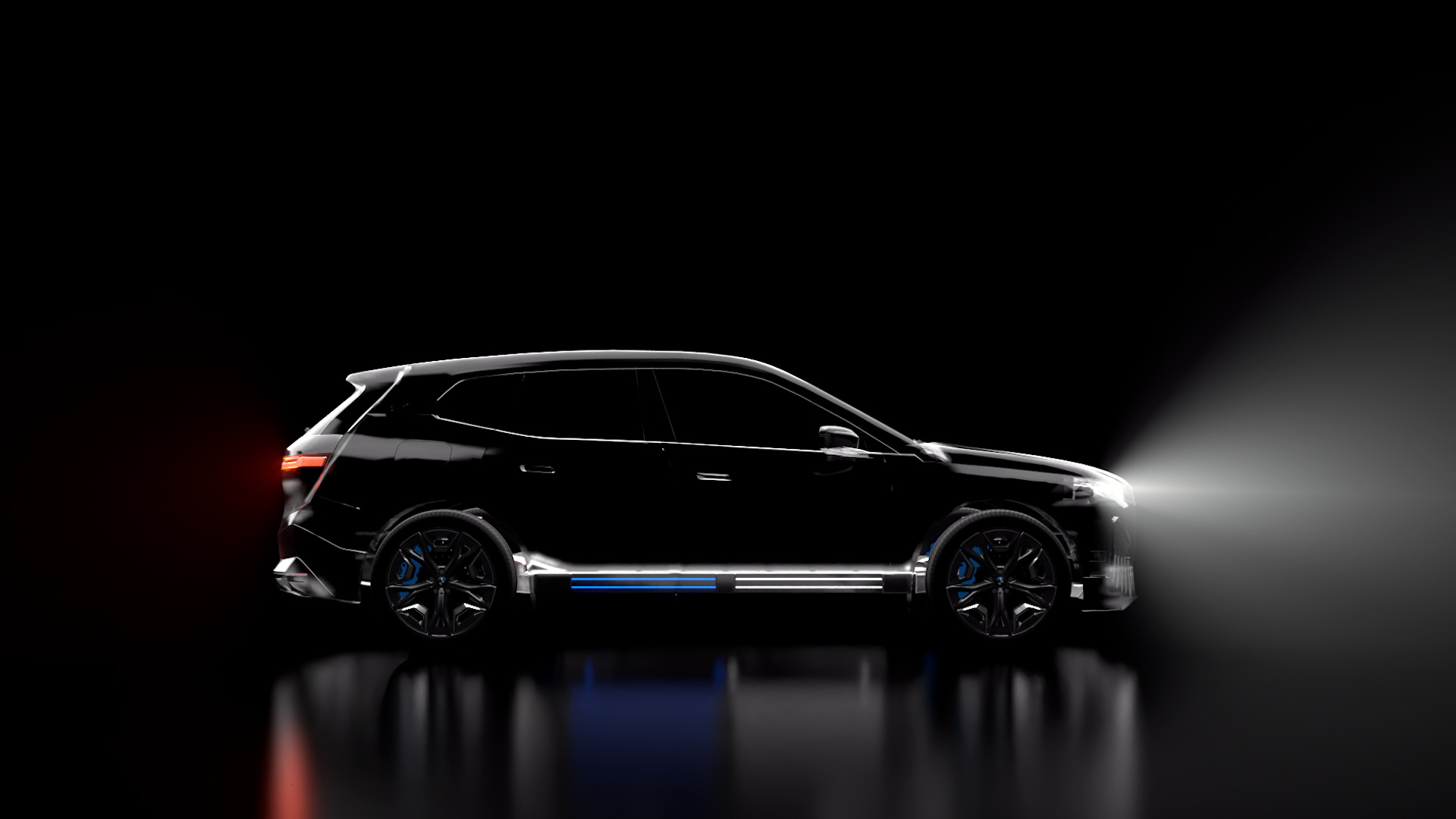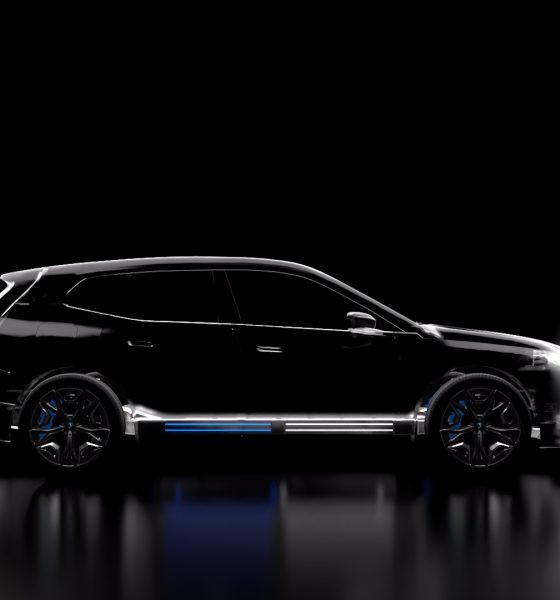

News
ONE Technologies teams with BMW to achieve iX EV with 600 miles of range
ONE Technologies, a battery manufacturing startup out of Novi, Michigan, has announced that they will be working with BMW to test their new “dual chemistry” battery and have the goal of achieving 600 miles of range on a single charge with the company’s iX electric vehicle.
Earlier this year, ONE became a when they were able to achieve a 752-mile drive in a Tesla Model S with their battery chemistry swapped in. The test proved to be beneficial and informative as the vehicle even traveled at an average speed of 55 MPH. Since then, they have garnered interest from multiple venture capital groups, but more notably, from BMW. In its most recent announcement, the company stated that it would be working with a BMW iX in order to test its prototype Gemini “dual chemistry” battery. After initial testing is done by ONE, more testing will be continued by BMW, which may allow for the creation of a more long-term relationship with the brand.
According to their website, ONE plans on releasing a more normal LFP battery, the Aries. However, the testing that has been done on the Model S and soon to be done on the iX has been with their Gemini battery that features “dual chemistry.”
The Gemini chemistry is slightly different than the Aries. ONE’s Gemini battery tech reduces lithium use by one-fifth while reducing graphite use by three-fifths while utilizing less nickel and cobalt. By using this type of chemistry, ONE is creating more sustainable energy storage technology that can significantly reduce environmental impacts, it said.
CEO Mujeeb Ijaz said, “We are thrilled to be working with BMW to demonstrate our Gemini long-range battery technology to consumers. As EV adoption grows, drivers are learning that real-world conditions can significantly reduce the performance of their batteries. Common situations like maintaining highway speeds, winter temperatures, climbing mountains, towing, or a combination of all four things present challenges to electric vehicles. We plan to pack twice as much energy into batteries, so EVs can easily handle long-distance driving in real-world conditions.”
Electric vehicle batteries are affected by weather conditions, which has been a primary focus of many automakers to resolve, especially in colder climates. Tesla and Rivian have adopted heat pump strategies to combat range loss in cold weather climates, but even still, the issues are magnified in extreme conditions.
In an interview with Car and Driver, the Ijaz described the Gemini battery as having 2 sections, each with its own chemistry. The first zone, which will propel the vehicle for the vast majority of the time uses LFP chemistry, while the second section uses a proprietary blend of lithium, manganese, and oxygen “while minimizing the use of nickel, cobalt, and eliminating graphite.”
ONE believes it can double the energy density of current batteries while remaining safer, more sustainable, and conflict-free compared to their competition, which is plentiful in the region. Looking at Europe, companies like Northvolt and Rimac are attempting to achieve similar results in making more sustainable batteries, and neither of them lack interest from big manufacturers like Porsche, VW, and Volvo. Even looking at smaller groups like Solid Power in Colorado working on solid-state technology, they have no trouble gathering interest from the likes of Ford, GM, Stellantis, and many others.
Nonetheless, the battery startup space is proving to be a crowded one, and ONE will have to do more than amazing vehicle testing if they hope to get their batteries on the road.
Check out ONE’s video of the Model S traveling 752 miles below.
https://youtu.be/fWj2YCdoc9A
What do you think of the article? Do you have any comments, questions, or concerns? Shoot me an email at william@teslarati.com. You can also reach me on Twitter @WilliamWritin. If you have news tips, email us at tips@teslarati.com!

News
Tesla FSD fleet is nearing 7 billion total miles, including 2.5 billion city miles
As can be seen on Tesla’s official FSD webpage, vehicles equipped with the system have now navigated over 6.99 billion miles.

Tesla’s Full Self-Driving (Supervised) fleet is closing in on almost 7 billion total miles driven, as per data posted by the company on its official FSD webpage.
These figures hint at the massive scale of data fueling Tesla’s rapid FSD improvements, which have been quite notable as of late.
FSD mileage milestones
As can be seen on Tesla’s official FSD webpage, vehicles equipped with the system have now navigated over 6.99 billion miles. Tesla owner and avid FSD tester Whole Mars Catalog also shared a screenshot indicating that from the nearly 7 billion miles traveled by the FSD fleet, more than 2.5 billion miles were driven inside cities.
City miles are particularly valuable for complex urban scenarios like unprotected turns, pedestrian interactions, and traffic lights. This is also the difference-maker for FSD, as only complex solutions, such as Waymo’s self-driving taxis, operate similarly on inner-city streets. And even then, incidents such as the San Francisco blackouts have proven challenging for sensor-rich vehicles like Waymos.
Tesla’s data edge
Tesla has a number of advantages in the autonomous vehicle sector, one of which is the size of its fleet and the number of vehicles training FSD on real-world roads. Tesla’s nearly 7 billion FSD miles then allow the company to roll out updates that make its vehicles behave like they are being driven by experienced drivers, even if they are operating on their own.
So notable are Tesla’s improvements to FSD that NVIDIA Director of Robotics Jim Fan, after experiencing FSD v14, noted that the system is the first AI that passes what he described as a “Physical Turing Test.”
“Despite knowing exactly how robot learning works, I still find it magical watching the steering wheel turn by itself. First it feels surreal, next it becomes routine. Then, like the smartphone, taking it away actively hurts. This is how humanity gets rewired and glued to god-like technologies,” Fan wrote in a post on X.
News
Tesla starts showing how FSD will change lives in Europe
Local officials tested the system on narrow country roads and were impressed by FSD’s smooth, human-like driving, with some calling the service a game-changer for everyday life in areas that are far from urban centers.

Tesla has launched Europe’s first public shuttle service using Full Self-Driving (Supervised) in the rural Eifelkreis Bitburg-Prüm region of Germany, demonstrating how the technology can restore independence and mobility for people who struggle with limited transport options.
Local officials tested the system on narrow country roads and were impressed by FSD’s smooth, human-like driving, with some calling the service a game-changer for everyday life in areas that are far from urban centers.
Officials see real impact on rural residents
Arzfeld Mayor Johannes Kuhl and District Administrator Andreas Kruppert personally tested the Tesla shuttle service. This allowed them to see just how well FSD navigated winding lanes and rural roads confidently. Kruppert said, “Autonomous driving sounds like science fiction to many, but we simply see here that it works totally well in rural regions too.” Kuhl, for his part, also noted that FSD “feels like a very experienced driver.”
The pilot complements the area’s “Citizen Bus” program, which provides on-demand rides for elderly residents who can no longer drive themselves. Tesla Europe shared a video of a demonstration of the service, highlighting how FSD gives people their freedom back, even in places where public transport is not as prevalent.
What the Ministry for Economic Affairs and Transport says
Rhineland-Palatinate’s Minister Daniela Schmitt supported the project, praising the collaboration that made this “first of its kind in Europe” possible. As per the ministry, the rural rollout for the service shows FSD’s potential beyond major cities, and it delivers tangible benefits like grocery runs, doctor visits, and social connections for isolated residents.
“Reliable and flexible mobility is especially vital in rural areas. With the launch of a shuttle service using self-driving vehicles (FSD supervised) by Tesla in the Eifelkreis Bitburg-Prüm, an innovative pilot project is now getting underway that complements local community bus services. It is the first project of its kind in Europe.
“The result is a real gain for rural mobility: greater accessibility, more flexibility and tangible benefits for everyday life. A strong signal for innovation, cooperation and future-oriented mobility beyond urban centers,” the ministry wrote in a LinkedIn post.
News
Tesla China quietly posts Robotaxi-related job listing
Tesla China is currently seeking a Low Voltage Electrical Engineer to work on circuit board design for the company’s autonomous vehicles.

Tesla has posted a new job listing in Shanghai explicitly tied to its Robotaxi program, fueling speculation that the company is preparing to launch its dedicated autonomous ride-hailing service in China.
As noted in the listing, Tesla China is currently seeking a Low Voltage Electrical Engineer to work on circuit board design for the company’s autonomous vehicles.
Robotaxi-specific role
The listing, which was shared on social media platform X by industry watcher @tslaming, suggested that Tesla China is looking to fill the role urgently. The job listing itself specifically mentions that the person hired for the role will be working on the Low Voltage Hardware team, which would design the circuit boards that would serve as the nervous system of the Robotaxi.
Key tasks for the role, as indicated in the job listing, include collaboration with PCB layout, firmware, mechanical, program management, and validation teams, among other responsibilities. The role is based in Shanghai.
China Robotaxi launch
China represents a massive potential market for robotaxis, with its dense urban centers and supportive policies in select cities. Tesla has limited permission to roll out FSD in the country, though despite this, its vehicles have been hailed as among the best in the market when it comes to autonomous features. So far, at least, it appears that China supports Tesla’s FSD and Robotaxi rollout.
This was hinted at in November, when Tesla brought the Cybercab to the 8th China International Import Expo (CIIE) in Shanghai, marking the first time that the autonomous two-seater was brought to the Asia-Pacific region. The vehicle, despite not having a release date in China, received a significant amount of interest among the event’s attendees.








